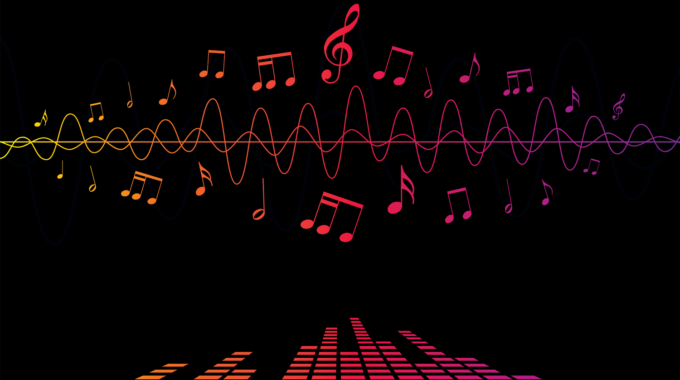David & Steve Gordon recently did a project in collaboration with SongRest. It derives from…

Binaural Beats Brainwave Music – Why and How it Works (2024)
How do binaural beats work? For that matter, what are binaural beats? Do you know if you’ve ever heard them?
Binaural Beats are tones of different sound frequencies that are added into music in a very special way.
The music then entrains the brain in various ways that can be very useful, from better focus and concentration, improved memory, relaxation, meditation, better sleep and much more.
That’s the short answer. Read on to find out how and why they work.
You may well have heard the term “binaural beats.” You might even know what they sound like.

Even so, we’ll safely assume that these new recordings from Binaural Beats Research & David & Steve Gordon will provide you with an entirely new and vivid musical experience.
As we discuss these recordings, we’ll also answer the question, “How do binaural beats work?”
Why the Binaural Beats Research is Different – and Better
David & Steve Gordon set out to create a new series of Binaural Beats Brainwave Music that is more effective and sounds better than any others they had heard before.
They teamed up with one of the leading sound researchers in the field of brainwave music, Richard Merrill of Songrest.
With its combination of isochronic tones and binaural beats, the music is a beautiful integration of music and mathematics.
And the music represents a perfect example of just how binaural beats work throughout the collection.
In her book The Power of Music, Elena Mannes shares a concept with which we’re already familiar. Something we know intuitively. And that is, music activates more of the brain than any other stimulus.
When you add isochronic tones and binaural beats to already superbly created music, you increase brainwave stimulation to even higher levels than has been achieved before with binaural beats music.
Music and Rhythm: A Natural Fit For Our Brain Wave Patterns
When you think about it, where has music, since the dawn of time, originated, if not our brains?
We’re not thinking about our foot making contact with the ground or the swing of our arms as we walk. It just happens. Our natural bodily rhythm takes over. It requires not a single conscious effort on our part.
Dance to the Music – Entrainment Music
If you’ve ever found yourself tapping your foot or felt your body swaying to a melody, you’re familiar with this phenomenon.
The moment we hear a musical beat, and for as long as the sounds continue, neurons in our brains repeatedly trigger in rhythm. This trigger causes an electrical communication signal to pass from our auditory system to our brain cells.
With this firing of brain cells, surrounding neurons begin to respond. This leads to more firing neurons, repeating again and again, until a pulsing rhythm results.
When enough neurons are fired and join in the rhythm, its strength becomes measurable via electroencephalograph, or EEG.
Even weaker individual brain cells join in with this rhythm, creating an electrochemical rhythmic pulse. The activity in the brain is then guided in a new direction in concert with these musical beats.
And that’s another example of how binaural beats work in music.
Phase Locking and Entrainment

“Phase locking” is a phenomenon that occurs when one area of the brain stimulates another area on the same frequency of brainwaves. It’s something we experience naturally.
Research conducted on auditory beats has shown that external beats such as the ones you’ll hear in these recordings induces brain frequency changes.
Alignment of the body and mind with tones and rhythms in brainwave music is referred to as entrainment.
Entrainment is capable of influencing cognitive processing much like phase locking. Resulting benefits include:
- improved focus
- enhanced problem-solving
- creativity stimulation
- greater mental flexibility
- visual-spatial working memory
How Do Binaural Beats Work to Entrain Our Brains?
Brainwaves in Our Response to Music
Wouldn’t you love to be able to play musical tones that align with your brainwave frequencies?
Sadly, because brainwave frequencies are too low for us to discern musical tones below a certain level, it’s just not that simple.
We’re unable to hear vibrations lower than 25 times per second, which is approximately the level of the lowest tones on a piano.
Luckily, this is where the magic of binaural beats music comes into play. It’s one of the answers to the question, how do binaural beats work?
Do Binaural Beats Really Work? Our Brain’s Intuitive Response to Music
We’ve already discussed how our brains are so naturally built for pitch and rhythm.
The fact is, our brains are more inherently knowledgable about music than we are. They’re far more responsive to musical overtones and undertones. They will even replace perceived missing musical notes.
Our brain’s response to music never ceases to amaze.
What is Auditory Evoked Potential?
Have you ever heard the term auditory evoked potential? This refers to a phenomenon created in our brains when we consciously follow a musical rhythm or beat.
The repetition of these evoked potentials is what creates brainwaves.
When you listen to the music in this collection, the auditory beats communicate with your brainwaves via binaural beats and isochronic tones.
In this way, your mental activity is receptive to being guided in new, better, directions.
So Then, What are Binaural Beats?
I’m sure you’ve attended concerts and heard the orchestra tuning up before the performance. If so, you’ve no doubt heard interference beats, even if you didn’t know what they were.
Interference beats occur when two tones, or notes, are played too close together. While each tone is pure, you hear a dissonance or lack of harmony. The two tones essentially clash with one another, sounding mismatched.
These clashing notes may vibrate together, making them louder. Or one might be louder than the other, making them softer, canceling each other out.
Understanding Interference Beats
This loud-soft rhythmic beat is called an interference beat.

Binaural beats take all of this a bit further.
Investigators as long ago as the 1800s discovered that when different tones are played simultaneously in each ear, the brain understands the tones are different. It then creates a phantom difference beat as though you were listening to the notes in the air.
Think about that. It’s an incredible phenomenon of the brain.
Research has shown that when your brain responds to these phantom beats, what we call binaural beats, it changes its own rhythmic activity to match the beat.
Sometimes, this response results in changes within the activity of the brain. Yet another answer to the question of how do binaural beats work.
How About Isochronic Tones?
Single tones that pulse in loudness are the isochronic tones we’ve been discussing thus far.
When combined with binaural beats, the result is auditory beat stimulation.

To better illustrate the difference in these tones and beats, one of them, the isochronic tones, are sensed in air. Binaural beats, on the other hand, are better discerned via headphones.
Binaural beats and isochronic tones are combined to make the beats themselves more clear. It doesn’t matter what tool you use to listen to them.
Isochronic tones affect brainwave entrainment more effectively when used in music.
For this reason, when isochronic tones are used alone you’ll enjoy greater comfort and positive effect. This is true whether they’re heard by themselves or in music.
How Binaural Beats Research & David & Steve Gordon Used Isochronic Tones
Binaural Beats Research takes isochronic tones one step further.
By creating our music in this way, we’ve provided continuity for the ears.
In so doing, the beat perception remains the same. The tone, however, is continuous.
Moreover, the frequency of both the pulses and the tone is exactly proportional, creating an incredible response within our brains.
Embedding Binaural Beats to Make Them Stronger
For the new recordings by Binaural Beats Research & David & Steve Gordon, SongRest makes use of a phenomenon discussed by one of the original experts in binaural beats, Gerald Oster.
As Oster explains in his revolutionary 1972 article “Auditory Beats in the Brain” in Scientific American:
When individual tones are masked to some extent by surrounding sounds, the brain discerns the tones more strongly.
If this masking works with “noise,” it’s yet more impactful with music.
For this project, we made use of the effects of auditory beats by embedding them in music designed for this very purpose.
That way, you still hear the beats but are able to enjoy the music. A truly remarkable holistic musical adventure for your brain.
For the first time you can listen to Binaural Beats music without being distracted by beats and tones and instead just enjoy the music.
Huge Breakthrough in Brainwave Technology – A Unique Sound Result
We’ve embedded the tones in such a way, in this music that they’re clearly audible as the music fades in and out from beginning to end of the piece.
Careful calibration of the tones throughout the music ensures that they are barely audible in speakers, headphones, and earbuds.
In this image depicting only the beginning and end of a musical selection, the jagged sound waves shown in teal blue are from the original piece. The green line shows the volume and added tones that are overlaid on the music.

As the music fades in at the beginning, the tones above the music level become audible as they plateau. They then begin to follow the music more closely.
As the music fades towards the end, you can still hear the tones, almost as a form of reference, before they too fade away with the music.
A Foundation In Binaural Beats Science
Brain science supports the ideas we’ve been discussing as to these musical beats and tones, which further maintains the integrity of the collection.
Peer-reviewed journals of neuroscience also support this idea of brain connections.
A pilot study conducted by a university in Spain, one of only a few recent experiments, revealed minimal response to isochronic tones. Their results caused them to conclude that flaws may exist in their process.
Binaural Beats Aren’t Always Pretty
When binaural beat expert Gerald Oster published his article back in 1972, he determined what he considered to be ideal frequencies for creating different binaural beats.
Binaural beats being two notes played together resulting in beats of a given frequency.
Mathematics in Music Development
Mathematical proportions are arbitrary and have little to do with auditory processing. Thus, some of the tone frequencies Oster developed mathematically were very high and piercing, making them unpleasant to hear.
Because most research done on binaural beats relies on Oster’s specifications, and since interference beats in some frequencies are jarring, binaural beats are often irritating to hear on their own.
For this reason, the majority of researchers and publishers of binaural beats hide them in “white noise” or “pink noise.” This results in a sort of hissing sound.
In the Binaural Beats Research series, we use Oster’s recommendations only as a guide and then conduct our own computations for generating sound.
We also use our own algorithm as explained below. An algorithm is a set of related computations for solving any given problem.
How We Designed the Embedded Brainwaves

So just how was this music by David & Steve Gordon created? And how do binaural beats work in this music?
Well, first David & Steve Gordon’s Binaural Beats Research created long-form ambient music for a variety of contemplative moods.
The next step was to determine appropriate brainwave bands for each piece of music.
Then, they used two kinds of slow beats to match brainwave frequency. This use of two beats is necessary as most brainwaves are too slow to be directly paired with musical tones.
Creating a Breakthrough in Brainwave Music
Thus, the music tracks created by David & Steve Gordon stand apart from all other brainwave music because the beats and the tone frequencies are all mathematically and musically related to the music.
This brainwave collection is a milestone in relation to other collections in binaural beats music due to the unique methods used in its creation.

The SongRest Algorithm
When conducting research into using music to reduce chronic pain, SongRest created a music-brainwave algorithm. We then applied it to the Gordons’ current music project.
This application was accomplished by aligning the pitch and tempo of the music with the tones, generating the binaural beats.
With this methodology, not only are the beats rooted in the fundamental tones of the music, they are related mathematically to the music key. This concept is another answer to the question of how do binaural beats work.
The foundation of the binaural beat, or the carrier tone, comes directly from the music. This all but eliminates binaural beat tone dissonance.
And because binaural beats can be slow to discern in the music, as we’ve discussed, we also included within each piece of music an isochronic tone track.
Since isochronic tones are more easily heard in speakers than binaural beats, and are also distinct sources of rhythmic entrainment, we used a tone from the music to create the isochronic beat pattern.
The final step was to tune the “shape” of the isochronic beat so that the ear continues to perceive it as a tone while also maintaining clear beats.
Creating the Binaural Beats
As discussed, we started by adding binaural beats. With one tone presented in one ear and a slightly different one in the other, they are most effective with the use of headphones.
The brain is able to modify its activities to match the beat by creating a beat perception.
When using speakers, both tones of the binaural beat components blend, creating a “monaural beat,” with both tones heard by both ears.
How Do Binaural Beats Work With Isochronic Tones?
The next step involved adding isochronic tones, which we explain below, to improve sound heard through speakers. The binaural beat strength is diminished to put greater emphasis on the slower beats.
Visualization of the Music
Below is an image from music editing software, to show how closely the volume of the tones follows the music.

This image shows only the last 25% of the music. Just imagine the work that went into matching the tones and adjusting them throughout each piece.
The image here shows the original music in teal green while purple depicts the “carrier” tone of the binaural beat. Matching the key of the music, this is the foundation tone.
The wavering line in the colored tracks shows the volume of the tones. They’re calibrated to follow subtle variances in the music volume, always ensuring that the tones are just within the audible range.
Notice how the volume shape profiles are the same as the sound wave shapes in the stereo music track, even if not always exact.
A critical factor in sound adjustment is the difference in instruments and frequencies, with some being louder than others at a given volume.
Editing to Perfection in the Brainwave Music
Many editing rounds were employed by the Gordons and SongRest to ensure that all elements of the binaural beats music came together perfectly when adjusting volume.
Differences in Response: Individual, Training, or Conditions?
Being that everyone is different, certain tones will be heard more clearly by some people than by others. We all respond to given tones differently, some having a strong response and others less so.
That said, we’ve made every effort to ensure that this music proves a valuable aid in relaxation and transformation for everybody.
Our hope is that the collection provides the ultimate brainwave music experience.
What are the Benefits of Listening to Binaural Beats For Each Individual?
When asking the question, how do binaural beats work for one person to another, one consideration is we all respond to tones differently based on individual tastes.
Training is another factor that determines how we respond to tones.
Research indicates that one person’s brain will respond with a different frequency than the one they hear; another person will remain in sync with the frequency heard.
These differences may result merely from differences in individuals.
However, experimental protocols within the laboratory are also a possible reason for these different responses. Shorter frequency length that doesn’t allow for true entrainment being one example.
How Do Binaural Beats Work Under Various Conditions
One study revealed that entrainment in some conditions didn’t occur until three and a half minutes into the sound.
Other studies derived from sound samples of three minutes or less.
For this reason, it’s important to factor in the experimental conditions of any given research.
How Do Binaural Beats Work? Exceptions
Of course, there are always exceptions.
For example, when hearing theta (7Hz) tones, experienced meditators showed an increase in delta frequencies (around 2-3Hz) generally associated with sleep.
This result suggests that meditation training had sensitized their brains in a certain way.
Through all of this remains one certainty:
Brain activity and general feelings of well-being are strongly influenced by auditory beats, whether binaural, monaural, or isochronic.
Examples of Binaural Beats For Music: Frequency Bands
Delta, the Mode of Sleep
In this image, you’ll see areas of the brain most affected by delta frequencies, known as the delta band (1Hz to 4Hz).

The thalamus and frontal lobe show strong, slow delta waves during sleep.
Therefore, listening to music containing delta waves helps calm anxiety and aids in falling asleep. Entrainment of brain waves to the music allows the brain to slow down.
Different brain activities are also associated with other frequencies, much as the delta frequencies are with those of sleep.
Frequencies often differ from person to person, yet still fall within identifiable groups known as “bands.”
Band and the Greek Alphabet
One band we already know is the delta band.
All bands are named after Greek letters in order of discovery. Alpha is first, with each subsequent band associated with one given brain activity category.
Some Closing Thoughts
Before we close, let’s explore some very real examples of how these beats are used in music.
Band Frequencies:
Delta:
5Hz to 4Hz, the frequencies of deep sleep, lucid dreaming, dream recall, deep sleep meditation and reduction of sleep anxiety
Theta:
4Hz to 7.5Hz, the frequencies of relaxation, meditation, drowsiness, stress reduction, anxiety amd panic attack elimination,
Alpha:
7.5Hz to 12Hz, alert without executive or analytic thinking, mindfulness, quieting the mind
Beta:
12Hz to 38Hz, alert and focused, attentive, active analytical and executive thinking, good concentration, improved energy, better memory, exam preparation and study music
Gamma:
38Hz to 90Hz, allows new thinking and creativity. Helps the brain recognize objects in complex situations, and remember their features. Spiritual enlightenment, memory enhancement, quick learning, concentration music
If you’d like to further explore the technical aspects of binaural beats, take a look at SongRest’s related article where we discuss the technical innovations of creating the beats and tones and embedding them in the music.
SongRest is an independent non-profit research group founded in 2016 to study neurological principles applied to music for the purpose of relieving pain long-term. Contact the author at music@songrest.com.
All images courtesy of SongRest, used by permission.





